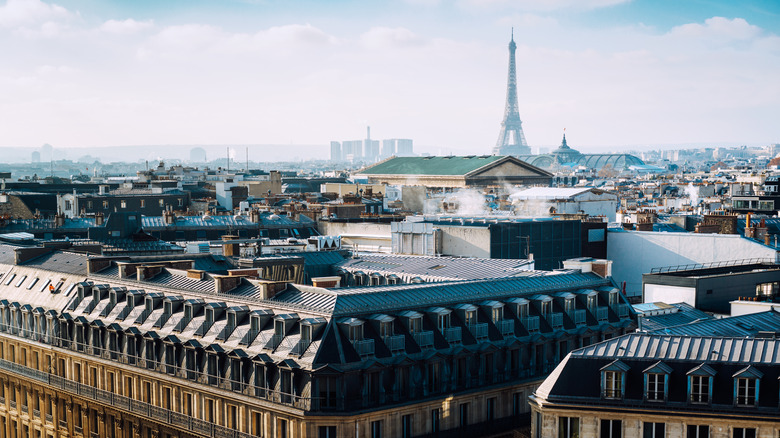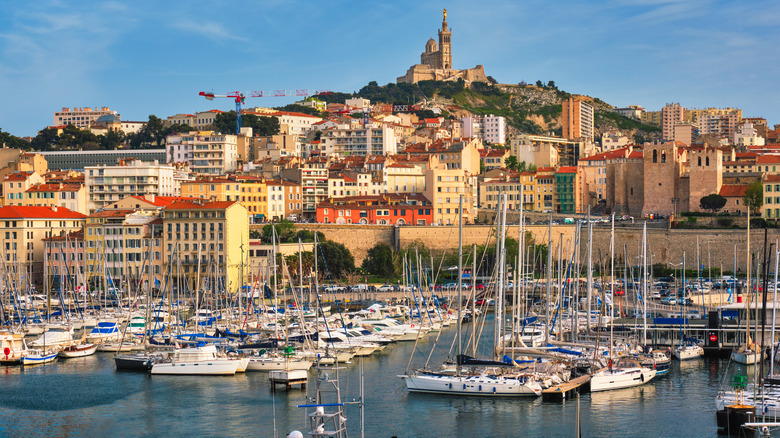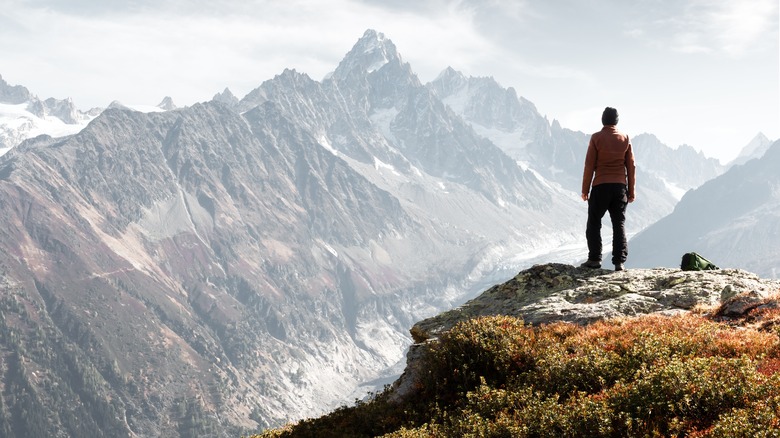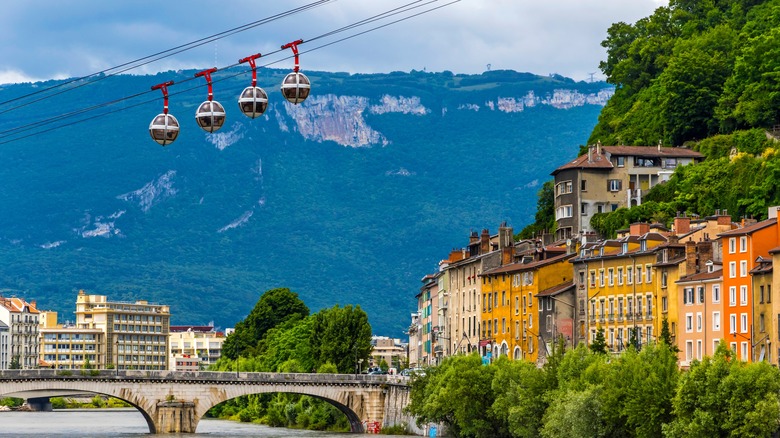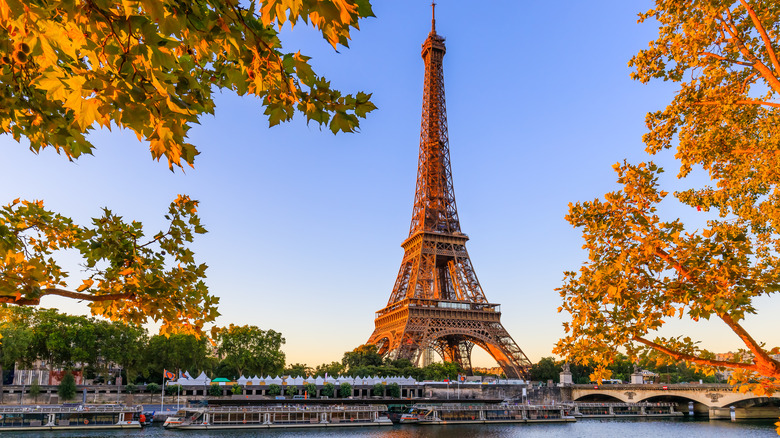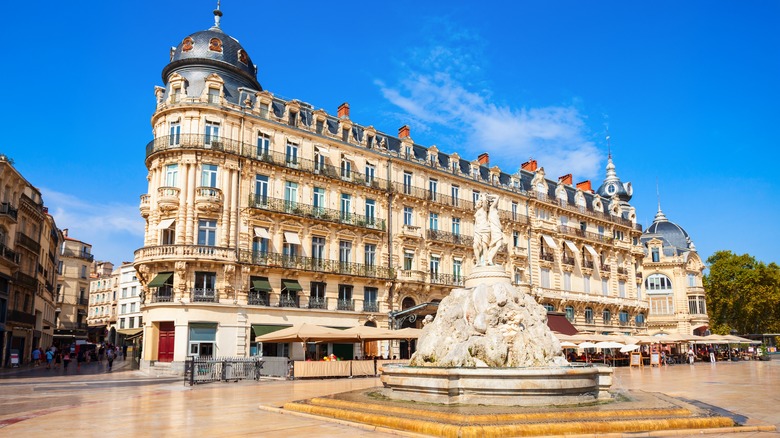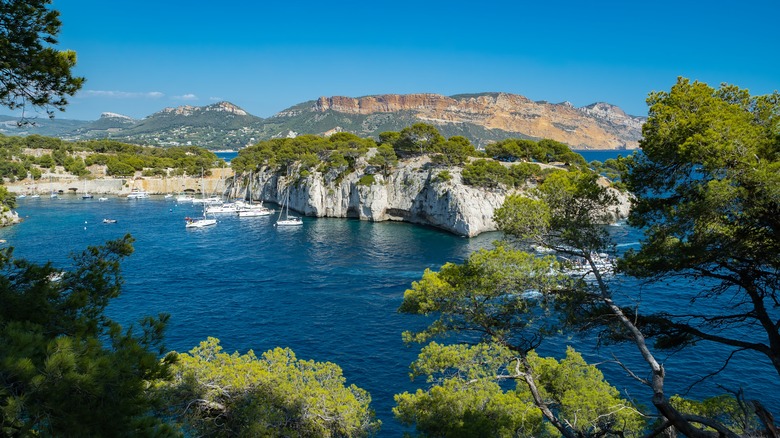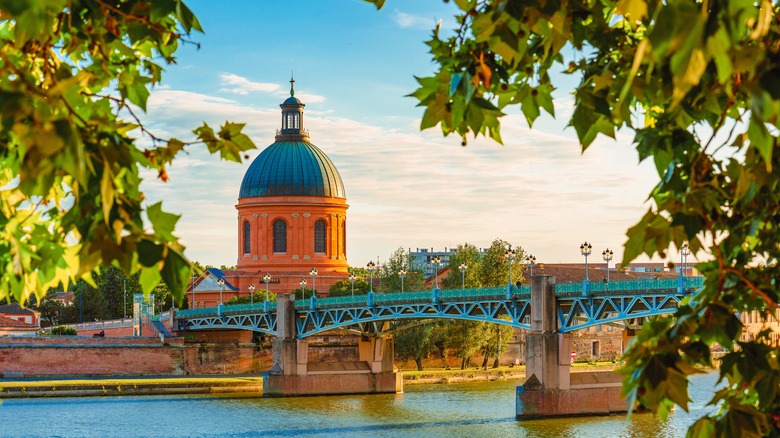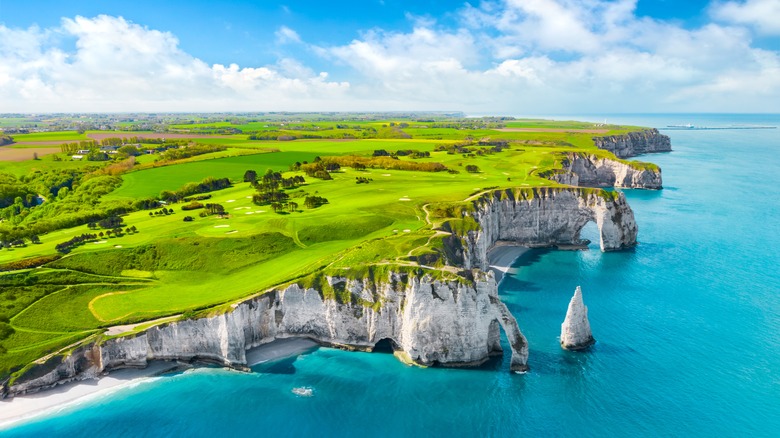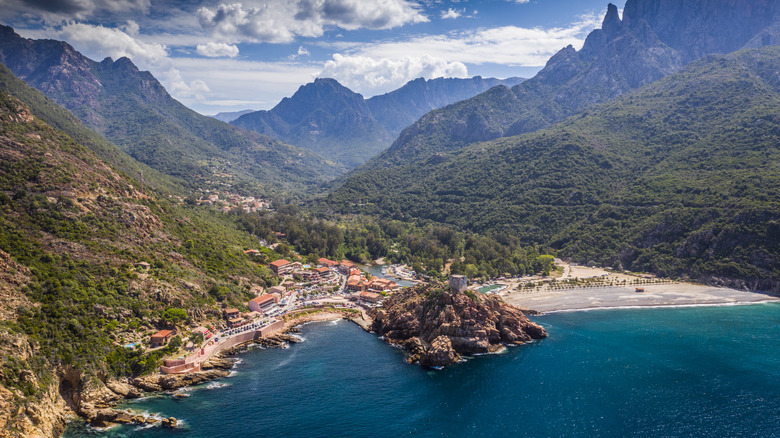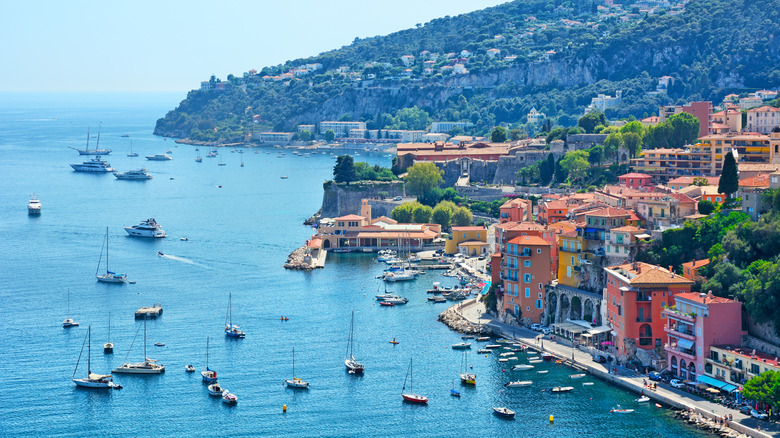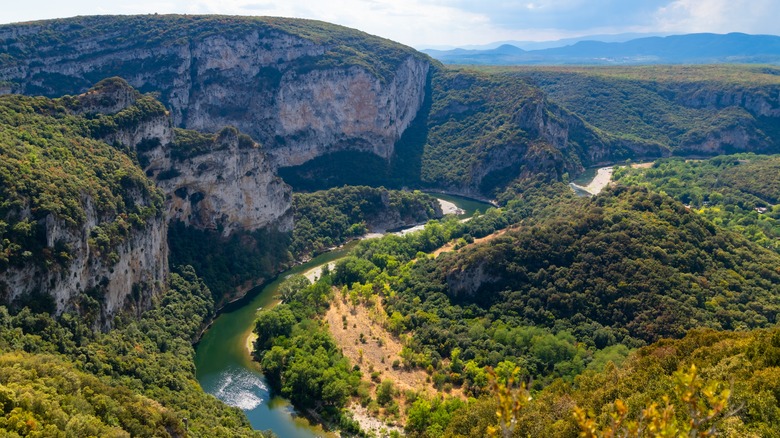Dangerous Vacation Spots In France
For decades, France has been a top choice for travelers looking for a diverse destination with world-class cuisine, beautiful cities, and magnificent landscapes. The country's offerings are immense, from the twinkling lights of the iconic Eiffel Tower to the bright turquoise water of the Cote d'Azur and everything in between. There are numerous reasons why tourists to Europe continue to prioritize France in their itineraries. Yet, most don't consider that besides the wonderful sites and spectacular views, some places in the nation require extra prudence. Thus, it's not somewhere you should jet off to without a second thought.
It may come as a surprise to learn that France has some not-so-safe parts. Below are the top areas to be aware of and tips to help you stay safe throughout your trip. Please note that we're not saying you should completely avoid any of the listed areas; in fact, many are popular destinations. Just be aware of particular safety concerns that are specific to these regions. But first, a general tip. When visiting France, it's vital to be cautious near popular tourist spots and transportation hubs like train stations and bus stops. It's worth noting that the neighborhoods around major train stations can be rough, so maintain vigilance after you exit stations. This advice applies to all of Europe, not just France.
Marseille
France's second-largest city is reputed for being a bit rough around the edges. While parts of Marseille are a postcard come to life, some neighborhoods should be avoided. Many cities in this article have a high crime rate, primarily petty offenses. But Marseille is the exception in that many of its criminalities are violent and gang-related, with a rising number involving illegal gun possession and drug trafficking. Due to their high crime rate, the districts to avoid are the 13th through 16th arrondissements, as well as the 3rd (Felix Pyat, specifically) and 9th arrondissements (Hauts de Mazargues).
In the rest of the city, exercise normal caution by paying attention to your surroundings and belongings. If traveling by car, park it somewhere busy and well-lit. Popular scams that target tourists, such as fake card tricks or forcing you to buy a freshly snapped photo, are prevalent; be prepared to say no and walk away. Consider taking a taxi instead of the subway if traveling alone late at night. Also, choose your hotel carefully. Those in the Vieux Port (Old Port) and the 7th to 9th arrondissements are in lovely and safe parts of the city and near main attractions.
The Alps
Ski vacations and hiking adventures typically come to mind when one imagines the French Alps. But, before you get too carried away with daydreams of days on the slopes followed by fondue and wine-filled evenings, remember to prepare for the unpredictable nature of the mountains. The weather can be erratic, transforming a bluebird day into a storm from your skiing nightmares. Or, a beautiful sunny day that calls for a hike can turn quickly into a flood-worthy rain storm. The best action plan is to check the forecast before you head out and save the outdoor activities for another day if it looks questionable.
However, as already mentioned, weather in the mountains is famously dubious, so it's also smart to monitor conditions while out. Sign up for alerts from Keraunos, a French observatory website for storms, or MétéoFrance. If you're already out on the mountain, keep an eye out for tell-tale signs of incoming storms, such as a sudden drop in temperature, strong winds, increasingly dark sky, and rainfall. At the slightest chance of conditions changing, turn back immediately. Additionally, the Gendloc app, which alerts authorities to missing and injured people in the mountains, is a great resource should you require help. Alternatively, use the emergency number in Europe — 112 for calls and 114 for texts. Both are free of charge.
Grenoble
One of the largest cities in the Alps, Grenoble has all the natural dangers of the mountains but with an added layer of urban crime. The vibrant city popular with students and the youth has some of the highest crime rates in French cities. There is some drug trafficking and organized crime, which, according to some residents on r/Grenoble, has increased in recent years. However, most of the time, it's smaller stuff such as bike theft or pickpocketing. So, as in most major cities, keep an eye on your belongings and lock up anything left behind, such as a bike or car. Similarly, avoid darkened streets and parks at night, especially when alone.
As for particular areas of the city to avoid, per Grenoble Redditors, these would be Pont De Claix, Saint Martin D'Heres, Echirolles, Villeneuve, and Mistral. In general, the northern part of the city receives little in the way of caution to visitors. So, it's best to choose accommodation there and exercise normal caution if you end up in one of the above-mentioned parts. And of course, thanks to its proximity to the mountains (you can walk or take the cable car up directly from the city center), prepare accordingly for outdoor activities.
Paris
Like New York and London, any large metropolis will have more crime than smaller towns and villages. And Paris is no exception. The French capital is known for its alluring façade and famous sites. However, there are some not-so-nice parts of it as well. Like its southern neighbor, Marseille, there are places in Paris where tourists shouldn't attempt to explore out of safety concerns (also because there isn't much to see). These are the 18th (outside the super touristy Montrematre section), 19th, and 20th arrondissements. Additionally, Gare du Nord and Gare de l'Est train stations and surrounding areas are best avoided in the evening. If you have a late arrival train, take a taxi.
Furthermore, France is a country that loves a good protest, the largest of which takes place in the capital. These can turn dangerous and involve conflict with law enforcement. So, try to avoid them where possible. If you see a large group with signs amassing in a square or gathering place, head to another area. Sometimes, they pop up quickly with little warning; in that case, leave the area as soon as you can. You'll also want to keep an eye out for pickpockets and scams involving tricksters and con artists. These are most common around attractions such as the Eiffel Tower, Montmartre, and Louvre.
Montpellier
This smaller city in the south of France is often overlooked by travelers in favor of larger metropolises such as Paris, Marseille, and Toulouse. But, if you're looking for a lesser-frequented stop along the Mediterranean, Montpellier is a great option. You'll come across a few Americans here. Like all cities, there are a few safety factors you'll want to keep in mind when planning your trip, as well as during your visit to the region. Numbeo has recorded an uptick in crime in Montpellier. Unfortunately, offenses labeled "high" are all too common in urban areas around the world. These include catcalling or harassment, theft, and vandalism. However, drug issues have also been noted as a concern.
Thus, to have the most stress-free trip, keep in mind the following. Stay particularly sharp in the city center, especially with your belongings. At night, be extra vigilant, and it's best not to be out after sunset alone. The rest of the city is generally safe per tourists and residents in the subreddit r/Montpellier. As with much of France, the area around the train station is best avoided in the evening. Others have noted that alertness is important while waiting for the tram or bus at night.
The Calanques
Calanques National Park is a beautiful area outside of Marseille in the Mediterranean. "Calanque" translates to rocky inlet, usually in the water. And that's exactly what the park comprises: numerous calanques of all shapes and sizes, most of which make for wonderful hiking destinations. The beauty and uniqueness of the area, though, have sadly led to its partial demise. Sky-high visitor numbers have resulted in the complete closure of some "calanques" due to erosion that has made them unstable. A bit of soil breakdown is a normal part of the natural process. However, overtourism has sped up the cycle and created potentially dangerous conditions in some areas.
As a potential visitor, do not enter closed areas under any circumstances. They will be labeled with a sign if an English translation is unavailable or written in French — fermée means closed. Check the park's website for the most up-to-date information regarding road closures and sectioned-off areas. Additionally, forest fires are another danger between June and September and may cause further closures. If you plan to hike, bring plenty of water, as you won't find any for sale within the park; temperatures can be pretty high in the summer. If you want to swim, note that only Sormiou and Saint-Estève have lifeguards; swim at your own risk. And while you might see people jumping from the rocks, it is not advised due to safety concerns.
Toulouse
Toulouse is one of the largest cities in France, just behind Paris, Marseille, and Lyon. Thus, it has all the potential safety concerns of a major metropolis, such as theft and harassment. Like Montpellier, La Ville Rose (Toulouse's nickname, thanks to the pink brick that makes up most of the buildings here) has recorded increased crime in recent years. The main areas of concern are non-violent offenses such as pickpocketing, vandalism, and street callouts.
Specific areas where you should be cautious are La Faourette and La Fourguette on the left bank of the Garonne, the river that runs through the city. There isn't much for tourists here, so you wouldn't have much reason to visit anyway. Additionally, the Mirail (on the outskirts where a lot of drug trafficking occurs), Trois Cocuses, and Les Izards are best avoided. Finally, the Empalot is an area south of the city center without much to see but known for higher crime rates. Even if you avoid all of the above neighborhoods, remember to remain extra cautious at nighttime. It's also a good idea not to go out after dark alone, although if you are vigilant and remain in busier neighborhoods in the city center, you will be okay. Take extra care when waiting for trams; if you can, call a taxi if it's late. Additionally, avoid visiting the river in the evening.
Beaches in Bretagne and Normandy
Bretagne and Normandy are regions in the northwest of the country that normally would be too large to generalize when it comes to discussing danger. However, both are popular beach destinations in France among French and international visitors. Beaches in both areas are predominantly tidal, exhibiting significant changes in water level throughout the day. This can potentially put you in danger if you don't pay attention. There are many old forts and other historic structures that you can walk out to on Bretagne and Normandy beaches.
However, this can usually only be done at low tide; the landmarks become inaccessible when the tide comes in and the sand disappears under it. So, if you walk out there during low tide, you could become stranded. The best course of action is to check tides ahead of time and plan accordingly. Tide Times is a great resource. Additionally, currents can be powerful here, so keep that in mind when swimming! More recently, deadly algae have been pointed out in the region, so keep an eye out for warning signs that advise against going in the water.
Corsica
Corsica is an island southeast of The French Riviera, closer to Italy than France. It's a unique destination that can be extraordinary if you have time to visit. The nature and coastline are stunning. However, due to the more remote nature and climate that can be a bit harsh, it can also be a dangerous place to vacation in France. The weather in Corsica is generally pleasant and warmer than a lot of Europe throughout the year. However, it can also be extreme, no matter the season. In summer, temperatures can get dangerously high on some days and be quite humid. Thus, it's crucial always to bring more than enough water on hikes and outdoor outings.
This is especially important because much of the island is sparsely populated, and finding somewhere to refill supplies outside the main cities can be difficult. In winter, the weather can be mildly pleasant, but it can also become cold and icy in the mountains. So, if you're planning cold weather outings, come prepared with layers of clothing, a first aid kit, hand warmers, and emergency blankets.
Finally, getting around Corsica without a car is challenging, but confirm timetables and availability if you choose to do so. Do this on the day you plan to travel, as schedules can change without warning due to construction or seasonality. You don't want to get stuck somewhere, and the next bus isn't until the following day!
Nice
This Cote d'Azur city might not be the first place you think of when you imagine a "dangerous" city. But the numbers don't lie, and the city has a fair amount of petty and occasionally violent crime. The main concerns are vandalism, theft, and harassment, which have increased slightly in the past few years. The particularly dangerous areas are Nice Nord, Les Moulins, L'Ariane, Las Planas, Bateco, and Le Traite. All of these should be avoided. Luckily, they're residential parts outside the city center that you likely won't have a reason to visit anyway.
As a visitor, you'll likely stay in Vieux Nice (Old Nice) or somewhere nearby, which is mostly safe, especially during the day. Be extra careful in the evening, and watch your surroundings and belongings. In the city center, the following areas aren't the safest at night, so try to avoid them, especially if you're alone: Michel Bridge and the surrounding area of the train station, as well as the districts of Arson, Riquier, and Saint Roch. Finally, the French Street area is known as the Red Light district, but it's not for tourists like the one in Amsterdam. When in doubt, take the tram or taxi back to your hotel after dark.
The Ardèche
The Gorge d'Ardèche is a beautiful natural phenomenon that is a popular summertime destination. Thousands of people visit every year to hike, bike, and swim in the gorge that comes to life in color after the winter gray melts away. However, if you plan to participate in water sports, the water conditions can change quickly. Only canoe or kayak with a licensed guide, and if hiking, pay attention to safety signs and closures on the trails. It's not advised to go in the water outside of the summer season.
Outside the gorge and national park, other conditions affect towns such as Montélimar. Situated between numerous mountains, at the lowest part of the valley, high winds can occur and cause safety issues. It can be difficult to walk or bike, especially over the many bridges that crisscross the Rhône. And with extremely high gusts, flying debris can cause damage or injury. Finally, it doesn't rain often in the area, but when it does, it pours and often causes extreme flooding. If you plan to hike or bike the ViaRhona, heed flood warnings and avoid the river if one is in place.
